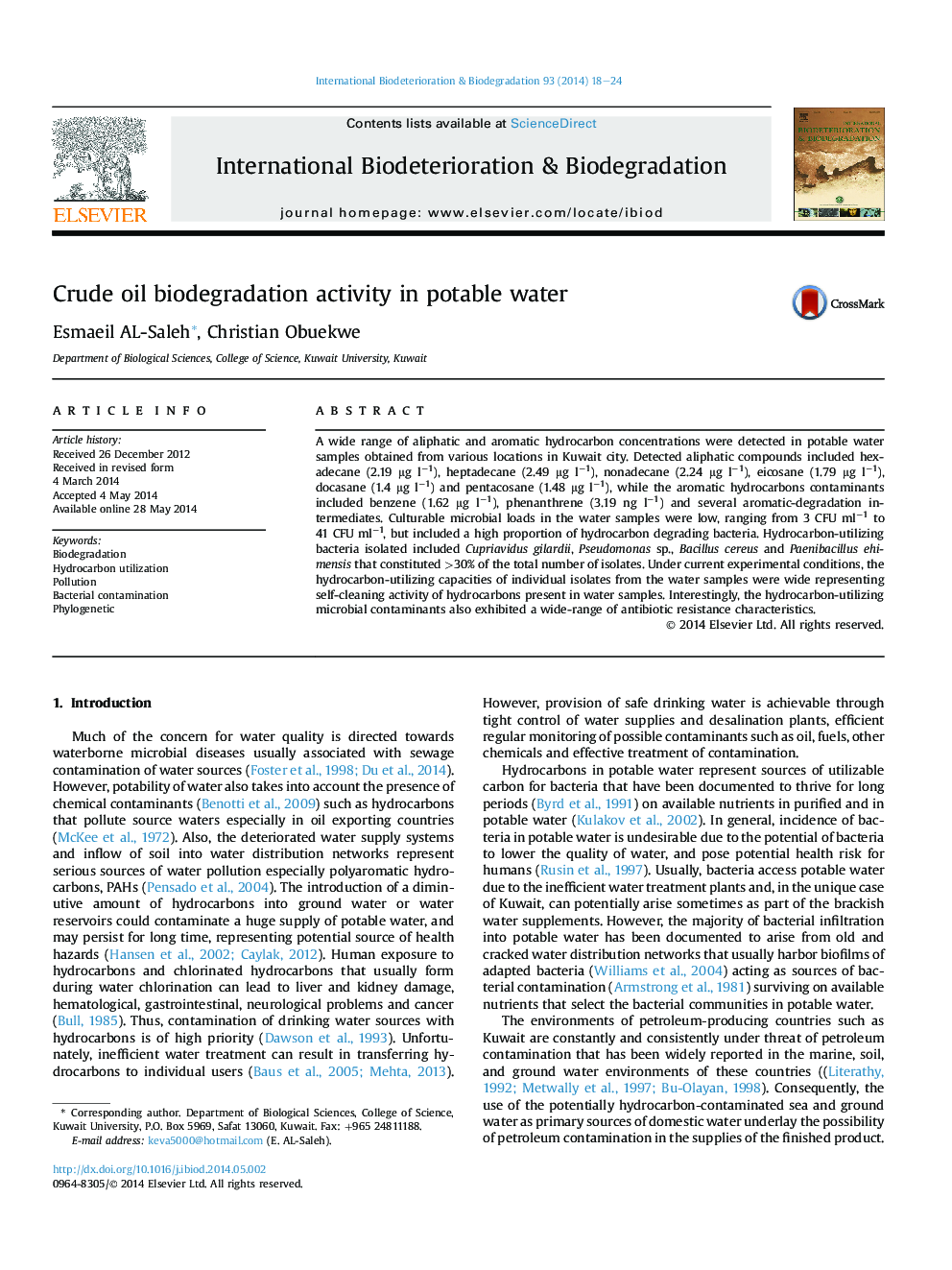| Article ID | Journal | Published Year | Pages | File Type |
|---|---|---|---|---|
| 4364702 | International Biodeterioration & Biodegradation | 2014 | 7 Pages |
•The presence of aliphatic and aromatic hydrocarbons in potable water in Kuwait was demonstrated.•Presence of hydrocarbons in all water samples implied common source of hydrocarbon pollution.•Hydrocarbons in water selected bacterial communities able to utilize a wide-range of available hydrocarbons.•The hydrocarbon-utilizing bacteria in water demonstrated potential to utilize available hydrocarbon pollution.
A wide range of aliphatic and aromatic hydrocarbon concentrations were detected in potable water samples obtained from various locations in Kuwait city. Detected aliphatic compounds included hexadecane (2.19 μg l−1), heptadecane (2.49 μg l−1), nonadecane (2.24 μg l−1), eicosane (1.79 μg l−1), docasane (1.4 μg l−1) and pentacosane (1.48 μg l−1), while the aromatic hydrocarbons contaminants included benzene (1.62 μg l−1), phenanthrene (3.19 ng l−1) and several aromatic-degradation intermediates. Culturable microbial loads in the water samples were low, ranging from 3 CFU ml−1 to 41 CFU ml−1, but included a high proportion of hydrocarbon degrading bacteria. Hydrocarbon-utilizing bacteria isolated included Cupriavidus gilardii, Pseudomonas sp., Bacillus cereus and Paenibacillus ehimensis that constituted >30% of the total number of isolates. Under current experimental conditions, the hydrocarbon-utilizing capacities of individual isolates from the water samples were wide representing self-cleaning activity of hydrocarbons present in water samples. Interestingly, the hydrocarbon-utilizing microbial contaminants also exhibited a wide-range of antibiotic resistance characteristics.
